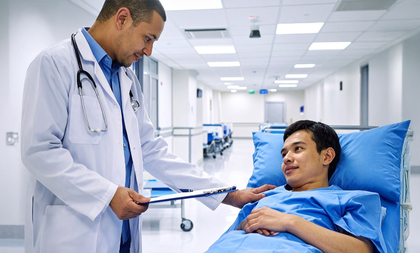Cabinet okays over Rs 15 cr-scheme to expand PG, UG seats to boost medical education
By IANS | Updated: September 24, 2025 16:25 IST2025-09-24T16:22:30+5:302025-09-24T16:25:04+5:30
New Delhi, Sep 24 In a bid to strengthen the overall availability of doctors in the country, the ...

Cabinet okays over Rs 15 cr-scheme to expand PG, UG seats to boost medical education
New Delhi, Sep 24 In a bid to strengthen the overall availability of doctors in the country, the Union Cabinet, chaired by Prime Minister Narendra Modi, on Wednesday approved the scheme to increase 5,000 PG seats and 5,023 MBBS seats for a total outlay of Rs 15,034.50 crore.
The approval of Phase III of the Centrally Sponsored Scheme (CSS) aims to strengthen and upgrade existing state government and central government medical colleges, standalone PG institutes, and government hospitals.
The seats will be increased “with an enhanced cost ceiling of Rs. 1.50 crore per seat”, according to a Cabinet Communique.
“The total financial implications of these two schemes are Rs 15,034.50 crore for a period from 2025-26 to 2028-29. Out of Rs 15,034.50 crore, the central share is Rs 10,303.20 crore and the state share is Rs 4731.30 crore,” it added.
The new scheme comes as PM Modi, during his Independence Day address in 2024, stated that the Central government will create 75,000 new medical seats over the next five years as part of the government’s move to augment the country’s healthcare infrastructure.
Currently, India has 808 medical colleges -- the highest in the world, with a total intake capacity of 1,23,700 MBBS seats.
In the last 10 years, the country has added over 69,352 new MBBS seats, registering a growth of 127 per cent.
During the same period, 43,041 PG seats were also added, showing an impressive growth of 143 per cent.
Yet, in certain regions, there is a need to enhance capacities to match the demand, access, and affordability of healthcare.
The new initiative “will significantly boost the undergraduate medical capacity, availability of specialist doctors and enable introduction of new specialties across government medical institutions and thus improve access to quality healthcare, especially in underserved areas”, the Cabinet said.
It will promote balanced regional distribution of healthcare resources while being cost-effective by leveraging existing infrastructure.
It also aims to provide more opportunities to the students to pursue medical education in India; enhance the quality of medical education and training to meet global standards; and boost the availability of doctors and specialists to help position India as a prime destination for providing affordable healthcare and thus boosting foreign exchange.
Notably, the initiative is also expected to generate direct and indirect employment opportunities in terms of doctors, faculty, paramedical staff, researchers, administrators, and support services; strengthen the health system's resilience and contribute to overall socio-economic development; promote equitable distribution of healthcare infrastructure across States/UTs.
Disclaimer: This post has been auto-published from an agency feed without any modifications to the text and has not been reviewed by an editor
Open in app